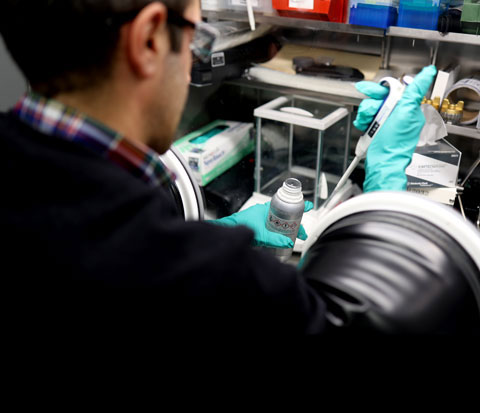3D Printing Batteries
Powering the Future:
The UK’s Role in the Global Battery Revolution
The global demand for batteries is soaring, projected to increase more than 14 times by 2030¹. To keep pace, countries are rapidly scaling up manufacturing, driven by innovation and investment.
Right now, China dominates the market, producing approximately 77% of the world’s batteries. Europe, currently at 7%, is set to increase its share to 17% by 2030¹, thanks to new gigafactories and strong policy support. The UK, though a small player today with less than 1% of global capacity², is gearing up for growth. Major investments, including a £4 billion gigafactory³ and other significant automotive and domestic battery production facilities, will help the UK become a key part of Europe’s energy transition.
The UK aims to scale up battery production to meet rising demand—110 GWh by 2030 and 200 GWh by 2040²—driven by the shift to electric vehicles and renewable energy storage. This push reflects a global effort to build a more sustainable future and reach net-zero emissions.
Leading the charge in battery innovation
At the forefront of battery technology, we are pioneering cutting-edge solutions that transform energy storage and manufacturing. By harnessing photopolymer-based advancements, we are revolutionizing battery component production, making it cleaner, safer, and more efficient.
Our Key Innovations
Solvent-Free Cathode Manufacturing:
Our proprietary photopolymer binder technology eliminates the need for hazardous solvents, replacing energy-intensive drying processes with efficient light curing. This scientific breakthrough reduces energy consumption by at least 30% in cathode production and 10% across total battery manufacturing, delivering a cleaner and more sustainable process.
Advanced Solid-State Batteries:
Using photopolymers, photocuring, and 3D printing, we are developing solid-state batteries that are lighter, safer, and longer-lasting. These innovations significantly improve energy density, reduce weight, and also enhance fire safety, making them ideal for electric vehicles and next-generation energy storage.

Leading the charge in battery innovation
At the forefront of battery technology, we are pioneering cutting-edge solutions that transform energy storage and manufacturing. By harnessing photopolymer-based advancements, we are revolutionizing battery component production, making it cleaner, safer, and more efficient.
Our Key Innovations
Solvent-Free Cathode Manufacturing:
Our proprietary photopolymer binder technology eliminates the need for hazardous solvents, replacing energy-intensive drying processes with efficient light curing. This scientific breakthrough reduces energy consumption by at least 30% in cathode production and 10% across total battery manufacturing, delivering a cleaner and more sustainable process.
Advanced Solid-State Batteries:
Using photopolymers, photocuring, and 3D printing, we are developing solid-state batteries that are lighter, safer, and longer-lasting. These innovations significantly improve energy density, reduce weight, and also enhance fire safety, making them ideal for electric vehicles and next-generation energy storage.
Collaborating for impact
We are committed to working alongside industry leaders, research institutions, and policymakers across the UK, Europe, and beyond. By combining expertise and innovation, we aim to accelerate sustainable battery manufacturing and support this global shift towards cleaner energy for transport, homes and businesses.
Explore our innovations and join us in shaping the future of energy storage.

We are proud to be a core technology developer in the Horizon Europe-funded AM4Batt project, collaborating with leading European organisations such as LEITAT (Spain), AIT (Austria), Leclanché (Switzerland), CEA (France) and Stellantis.
As a key member of the AM4Batt project, Photocentric is developing 3D-printable cathodes and a hybrid solid-state electrolyte, working towards an all-solid-state battery prototype with an energy density of 400 Wh/kg.